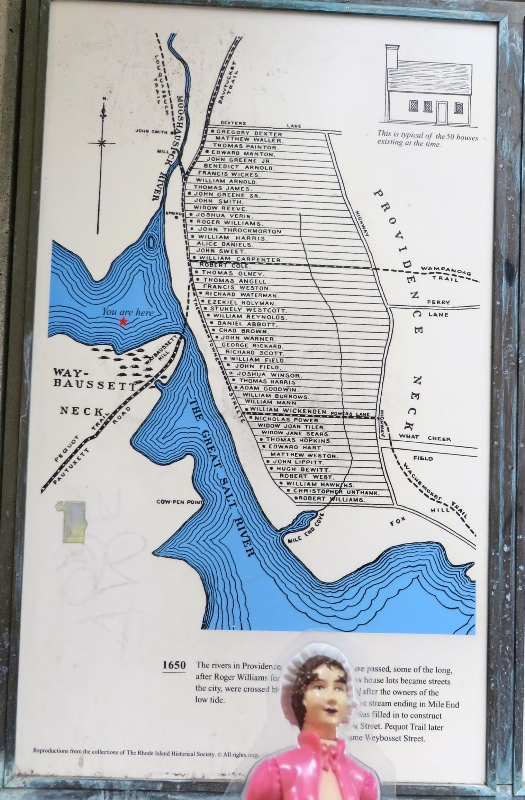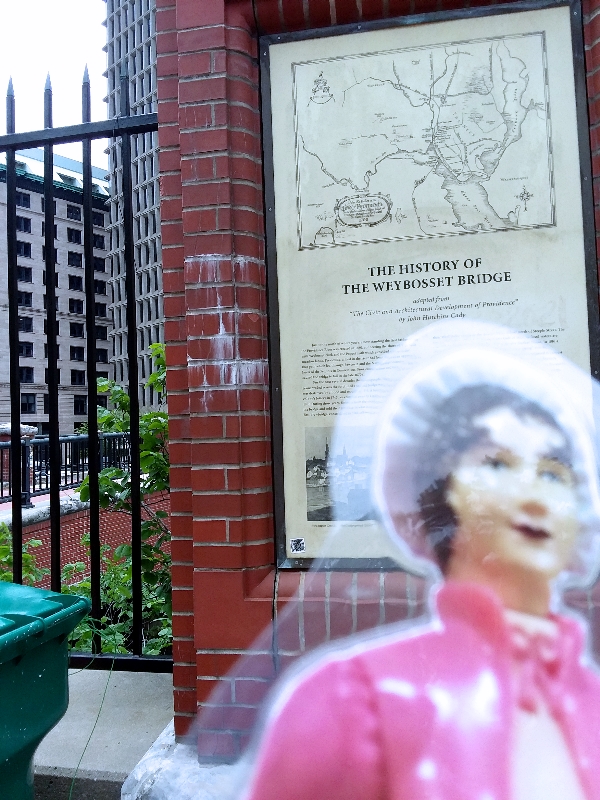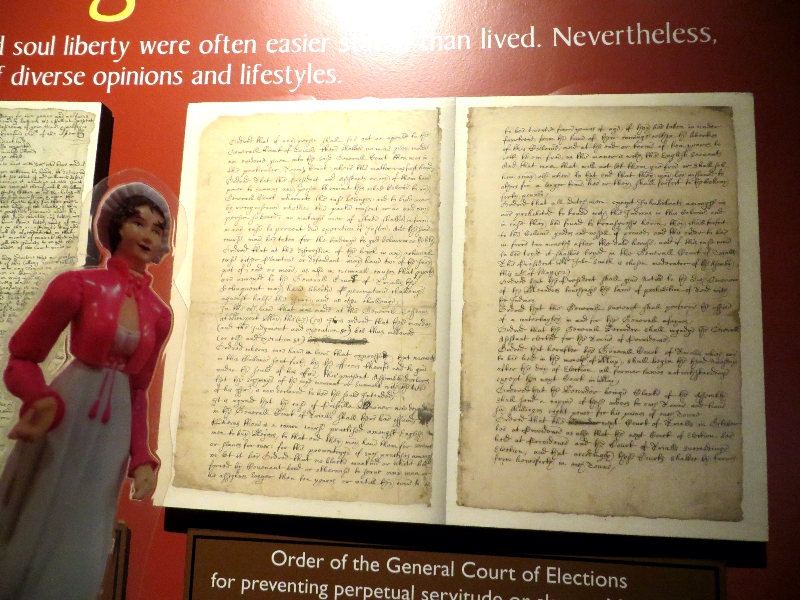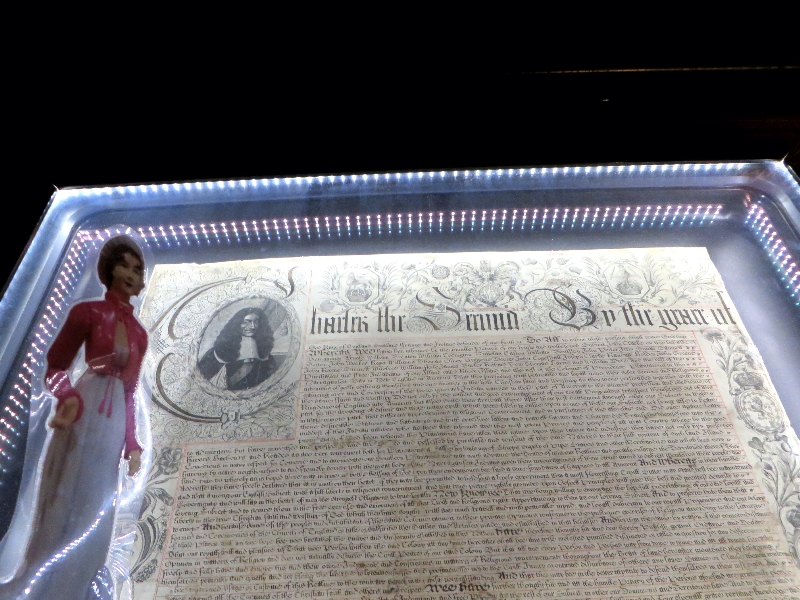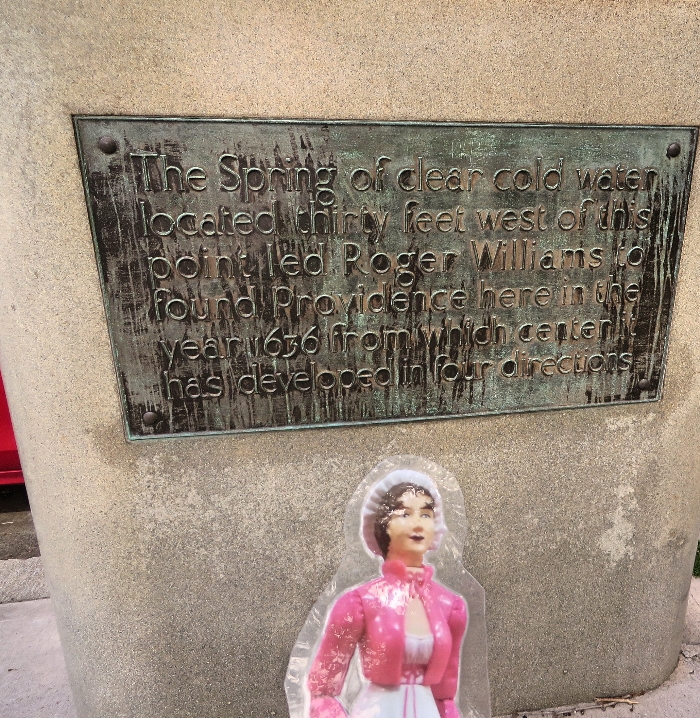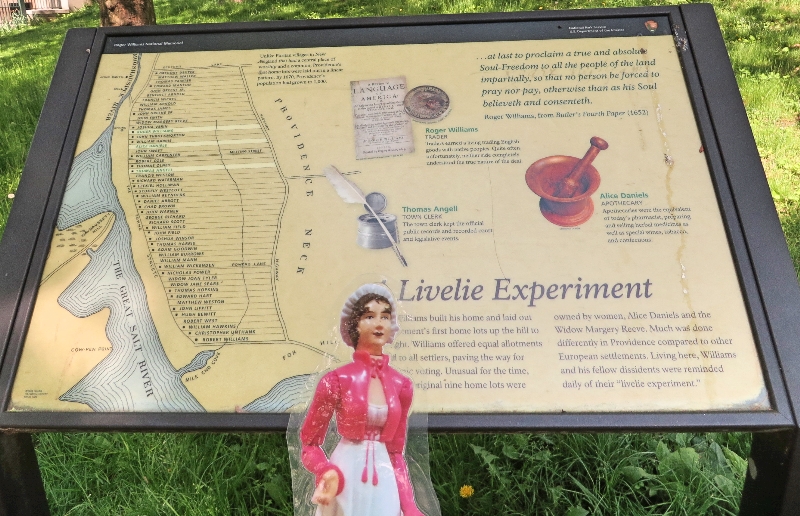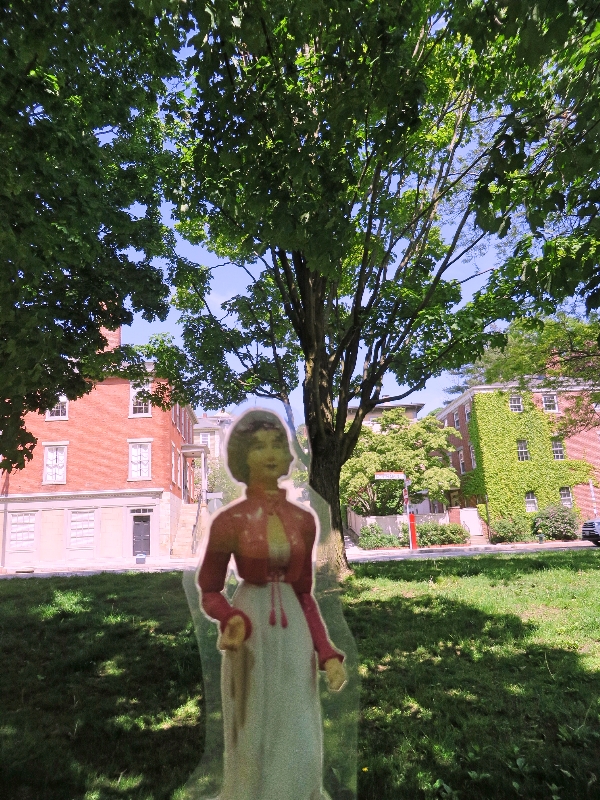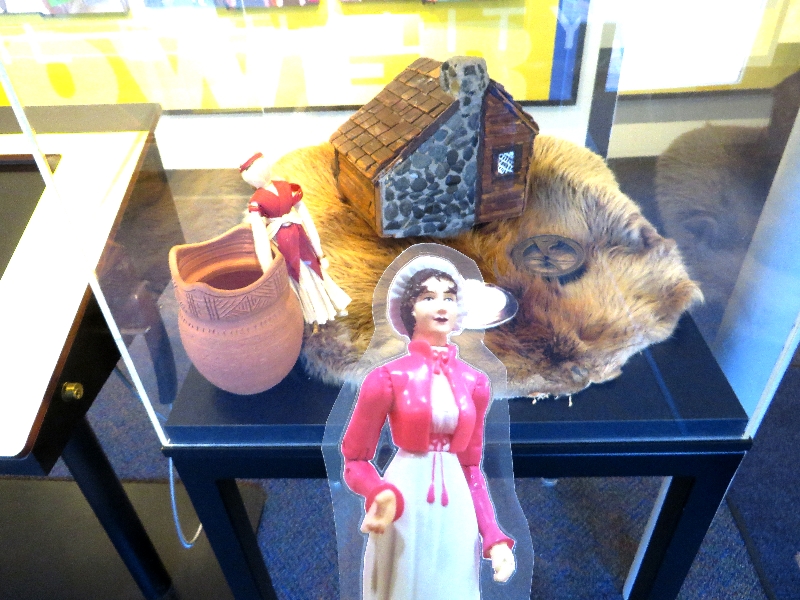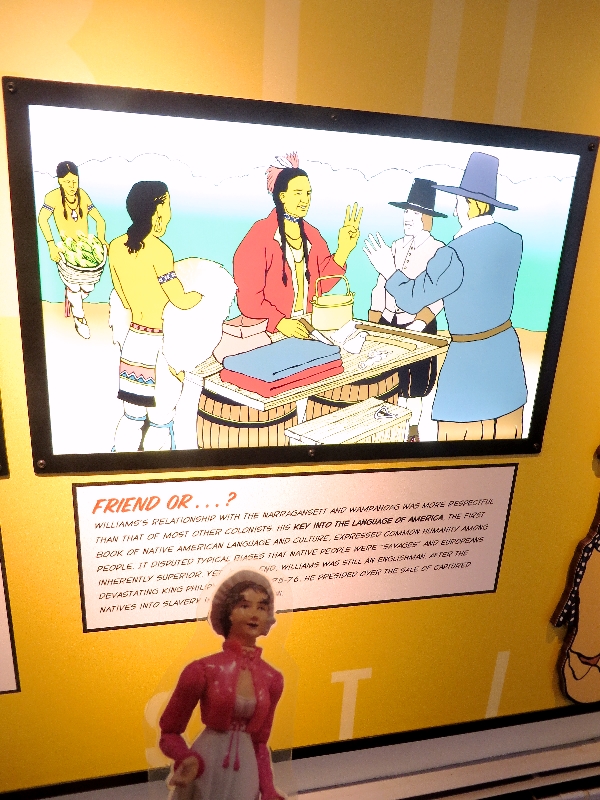Flat Jane Austen in Providence: In Which Jane Goes Shopping
(With a very brief peek into the not so far off future)
May 21, 1816
My dearest friends,
We headed out for a day of shopping and a look around the Town. The prices for dry goods are rather dear. I did not purchase anything.
We travel down, down the hill (by carriage of course) to Broad Street to the Providence Arcade. A devastating fire destroyed 40 shops nearby on South Water Street in '01. The shopping district has been rebuilt in a more elaborate stile since then. This is the only indoor shopping mall in all of America! At this time it is also the first and only major commercial building on the west side of the river. Oh my heavens! This town is much smaller than London and even Bath but larger than the villages of Steventon and Chawton.
It was built in the Greek Revival style with columns, granite walls and classical facades resembling a Greek temple. 'Twas modeled after the Burlington Arcade in London and arcades in Paris.
Between two streets, a wide central walkway runs through the center of the building with a great skylight overhead admitting a flood of light over the building’s gracious cast iron
balustrades and railings.
This location is not so ideal. There is much dust, wind and rain, and
frequently ladies are obliged to step off the side walks to pass by stones, timers laid there by
masons and carpenters. If by chance they meet a hog or a chimney sweeper on the sidewalks, they must give way for them or receive a "dark rub." (Providence Gazette).
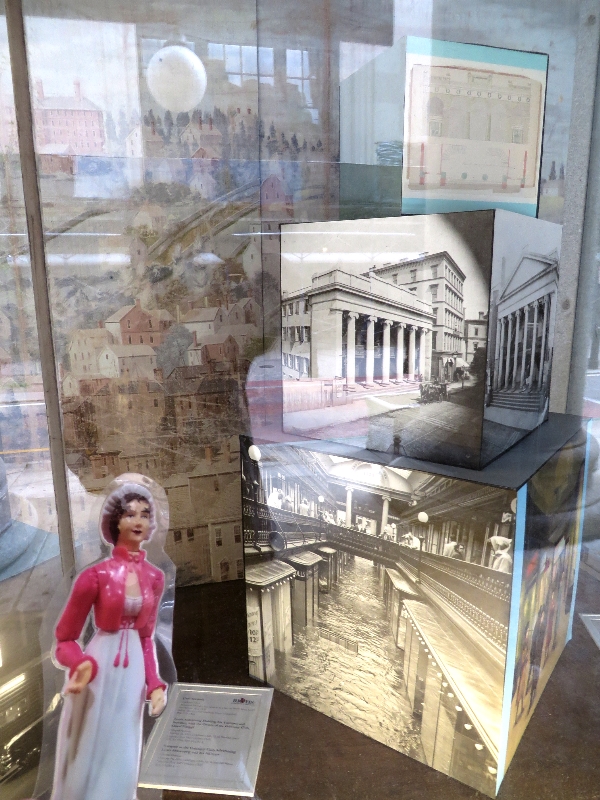 |
| Westminster Street entrance museum windows by RIHS |
A copy of the theatre curtain from the first theatre in Providence, nearby on Westminster and Matthewson Streets, built not so long ago in 1795. The curtain was painted by John Worrall in 1809 and is used to entertain audiences between shows.
I shall attempt to copy this pencil, ink and watercolor sketch for the Westminster front of the Arcade drawn by architect Russell Warren. [c. 1828]
There are two facades. One on Weybosset street designed by Joseph Bucklin and one on the other side [Westminster Street] by Russell Warren. [photo Weybosset façade c. 1865 and Westminster façade c. 1867]
Can you imagine the flooding from the Great Gale last year? [or perhaps in the future in 1954?]
Editor's note: Actually not built until 1828 but close enough! Technically the Burlington Arcade in London was not yet built when Jane Austen died either, but Flat Jane has to bend time a bit. The street was renamed Weybosset Street at some point later in the 19th-century. The 1920s theater we went to is at the other end of the street, for reference. The Arcade has had its ups and downs. In my VERY early childhood, in the early 1980s, it was still used as an indoor shopping mall. It fell into disuse as the suburban shopping centers and later modern malls became more popular. It was renovated recently and how houses a few shops and restaurants and the upper level has micro lofts for students at the Rhode Island School of Design and other young professionals. Windows by Rhode Island Historical Society.
We travel back home by way of Market Square to fetch produce for the household.
Can you see where I am?
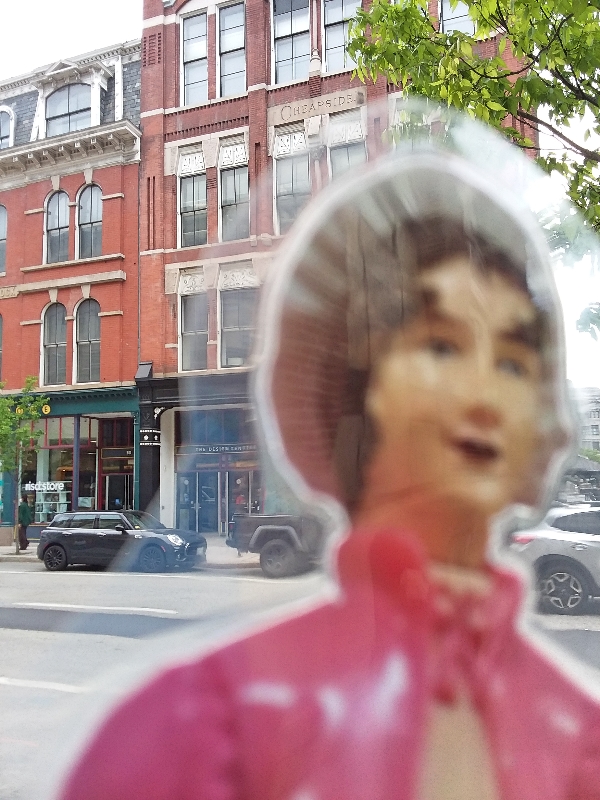 |
| Blow up the photo to see where Jane is! |
How about now?!
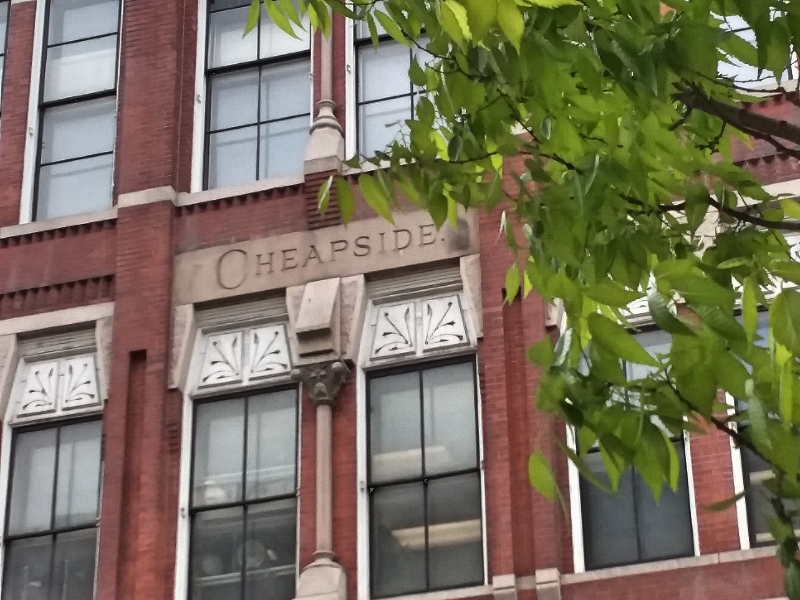 |
| Cheapside! Yes there are warehouses nearby! |
Yes, indeed, there is a Cheapside here in Providence. Cheapside is the major commercial center of this town.
Editor's note: While the buildings date to late 19th-century, I couldn't resist taking pictures of Jane in front of the Cheapside sign. Jane is at the Cheapside Block, built in 1873 in the High Victorian Gothic style. (Architecture nerds can click the link to read the Providence Preservation Society's report).
We visited Market House in Market Square, at the east end of Weybosset street, designed by Mr. John Brown's brother, Mr. Joseph Brown and colonial governor Stephen Hopkins. The original structure was only two stories high. Here they sell fish, meat and produce in an open storey on the ground floor. The second floor serves as town hall. In '97 another storey was added to house the first Masonic Lodge in Rhode Island. I know not who these Masons are or what they do, 'tis all a secret.
In this building, or near to it, the roguish colonists gathered to protest the King's tax on tea. They outdid those horrid Bostonians and burned the tea on 2 March 1775! The horror! Do they not know tea is expensive even in England? We keep it under lock and key! During the War for American Independence, the building served as barracks for the French Army. Those Frenchies! They sided with the colonial upstarts causing war between our countries, as usual.
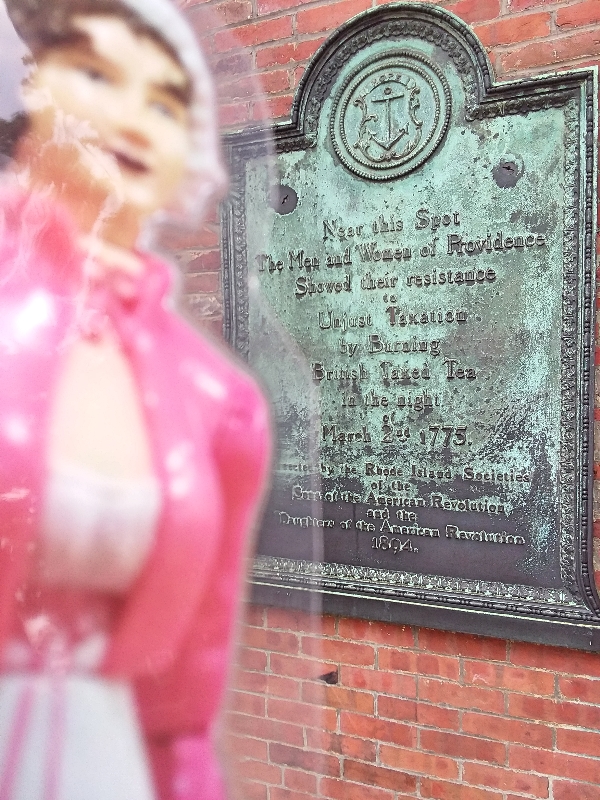 |
Site of the little known PROVIDENCE tea party!
No wonder one can not find a decent cup of tea around here. |
Here you can see the high water mark from a gale that blew through September last.
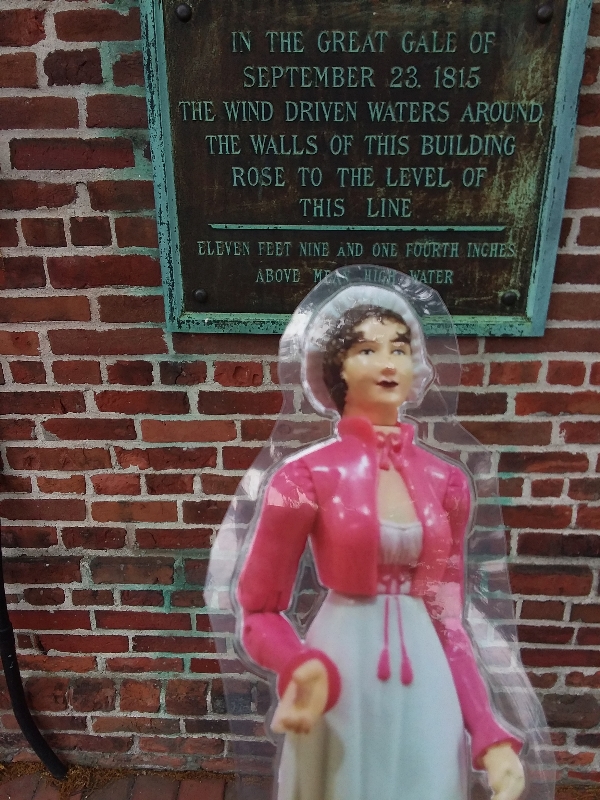 |
| High water mark for the Great Gale of 1815 |
The buildings along the waterfront were flattened, the city destroyed by flood as the water rose to over 11 feet. Astonishing! I have heard of such gales from Francis and Charles who have been on their ships the midst of such storms. I can not imagine the terror. Susanna just remarked, it was windy! On the hill they were safe from the flood.
I am quite busy paying calls and seeing this town. I shall try to write again soon.
Yours most affectionately,
Jane










